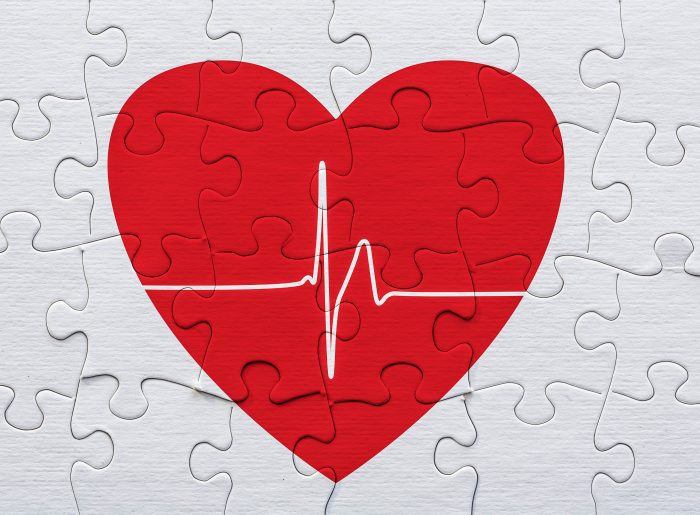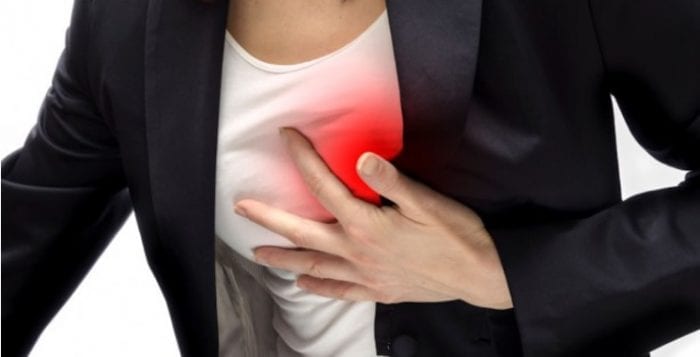Legume consumption plays an important role
By David Dunaief, M.D.

Coronary artery disease is the most common type of heart disease, which can cause heart attacks. How common is it? According to the Centers for Disease Control and Prevention, about 6.7 percent of U.S. adults over the age of 19 have coronary artery disease (CAD) (1). There are 805,000 heart attacks in the U.S. annually, and 200,000 of these occur in those who’ve already had a first heart attack.
Among the biggest contributors to heart disease risk are high blood pressure, high cholesterol, and smoking. In addition, if you have diabetes or are overweight or obese, your risk increases significantly. Lifestyle factors also contribute to your risk: poor diet, lack of physical activity and high alcohol consumption are among the most significant contributors.
This is where we can have a tremendous impact and significantly reduce the occurrence of CAD. Evidence continues to highlight lifestyle changes, including diet, as the most important factors in preventing heart disease. Changes that garner a big bang for your buck include the consumption of chocolate, legumes, nuts, fiber and omega-3 polyunsaturated fatty acids (PUFAs).
Chocolate’s benefits
Preliminary evidence shows that two pieces of chocolate a week may decrease the risk of a heart attack by 37 percent, compared to those who consume less (2). However, the authors warned against the idea that more is better. In fact, high fat and sugar content and calorically dense aspects may have detrimental effects when consumed at much higher levels. There is a fine line between potential benefit and harm. The benefits may be attributed to micronutrients referred to as flavonols.
I usually recommend that patients have one to two squares — about one-fifth to two-fifths of an ounce — of high-cocoa-content dark chocolate daily. Aim for chocolate labeled with 80 percent cocoa content.
Alternatively, you can get the benefits without the fat and sugar by adding unsweetened, non-Dutched cocoa powder to a fruit and vegetable smoothie.
Who says prevention has to be painful?
Increase dietary fiber
Fiber has a dose-response relationship to reducing risk. In other words, the more fiber you eat, the greater your risk reduction. In a meta-analysis of 10 studies, results showed for every 10-gram increase in fiber, there was a corresponding 14 percent reduction in the risk of a cardiovascular event and a 27 percent reduction in the risk of heart disease mortality (3). The authors analyzed data that included over 90,000 men and 200,000 women.
According to a 2021 analysis of National Health and Nutrition Examination Survey (NHANES) data from 2013 to 2018, only 5 percent of men and 9 percent of women get the recommended daily amount of fiber (4).
The average American consumes about 16 grams per day of fiber (5).
So, how much is “enough”? The Academy of Nutrition and Dietetics recommends 14 grams of fiber for each 1,000 calories consumed, or roughly 25 grams for women and 38 grams for men (6).
We can significantly reduce our risk of heart disease if we increase our consumption of fiber to reach the recommended levels. Good sources of fiber are fruits and vegetables with the edible skin or peel, beans and lentils, and whole grains.
Consume more legumes
In a prospective (forward-looking) cohort study, the First National Health and Nutrition Examination Survey Epidemiologic Follow-up Study, legumes reduced the risk of coronary heart disease by a significant 22 percent (7). Those who consumed four or more servings per week saw this effect when compared to those who consumed less than one serving per week. The legumes used in this study included beans, peas and peanuts. There were over 9,500 men and women involved, and the study spanned 19 years of follow-up.
I recommend that patients consume at least one to two servings a day, or 7 to 14 a week. Imagine the impact that could have, compared to the modest four servings per week used to reach statistical significance in this study.
Focus on healthy nuts
In a study with over 45,000 men, there were significant reductions in CAD with omega-3 polyunsaturated fatty acids (PUFAs). Both plant-based and seafood-based omega-3s showed these effects (8). Good sources of omega-3s from plant-based sources include nuts, such as walnuts, and ground flaxseed.
Your ultimate goal should be to become “heart attack proof,” a term used by Dr. Sanjay Gupta and reinforced by Dr. Dean Ornish. While even modest dietary changes can significantly reduce your risk, the more significant the lifestyle changes you make, the closer you will come to achieving this goal.
References:
(1) cdc.gov. (2) BMJ 2011; 343:d4488. (3) Arch Intern Med. 2004 Feb 23;164(4):370-376. (4) nutrition.org (5) NHANES 2009-2010 Data Brief No. 12. Sep 2014. (6) eatright.org. (7) Arch Intern Med. 2001 Nov 26;161(21):2573-2578. (8) Circulation. 2005 Jan 18;111(2):157-164.
Dr. David Dunaief is a speaker, author and local lifestyle medicine physician focusing on the integration of medicine, nutrition, fitness and stress management. For further information, visit www.medicalcompassmd.com.








